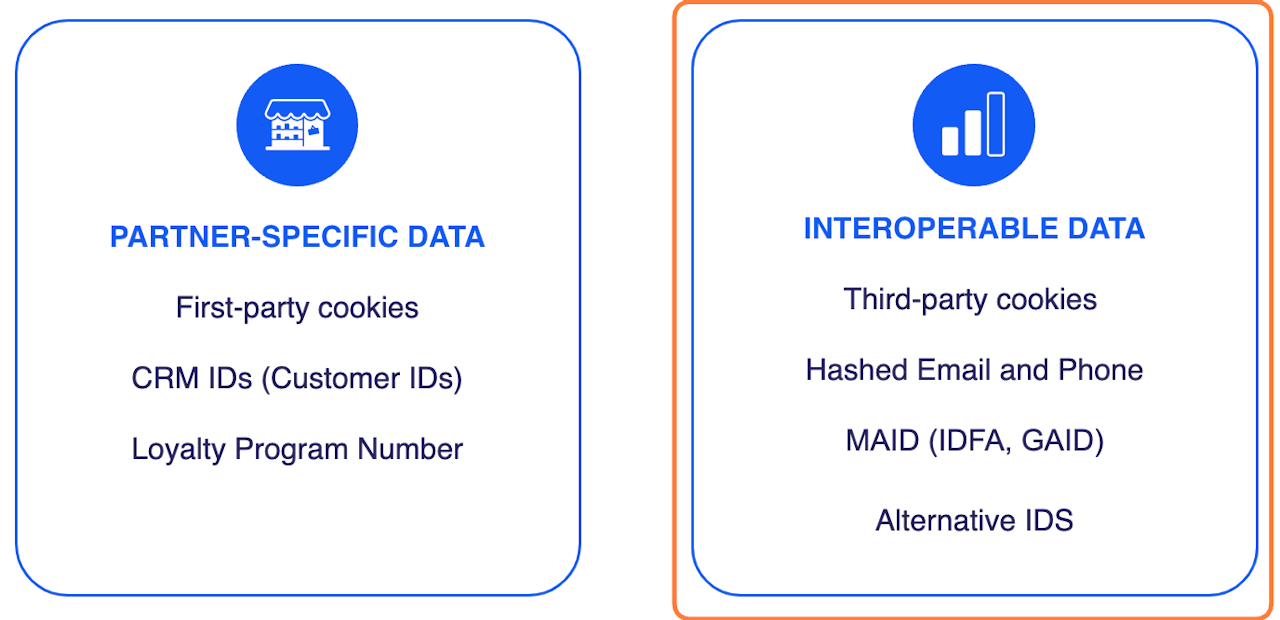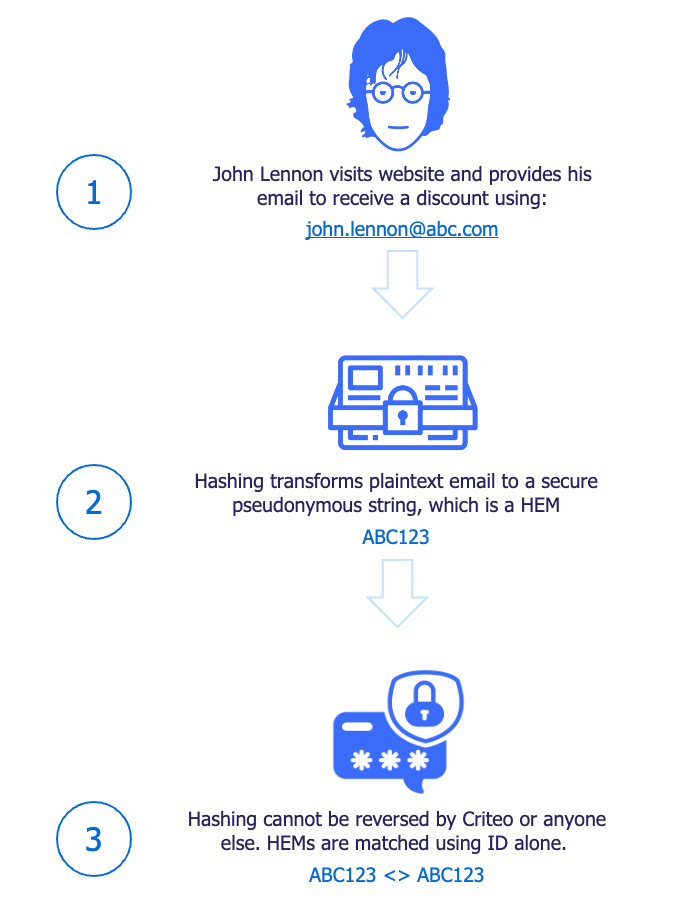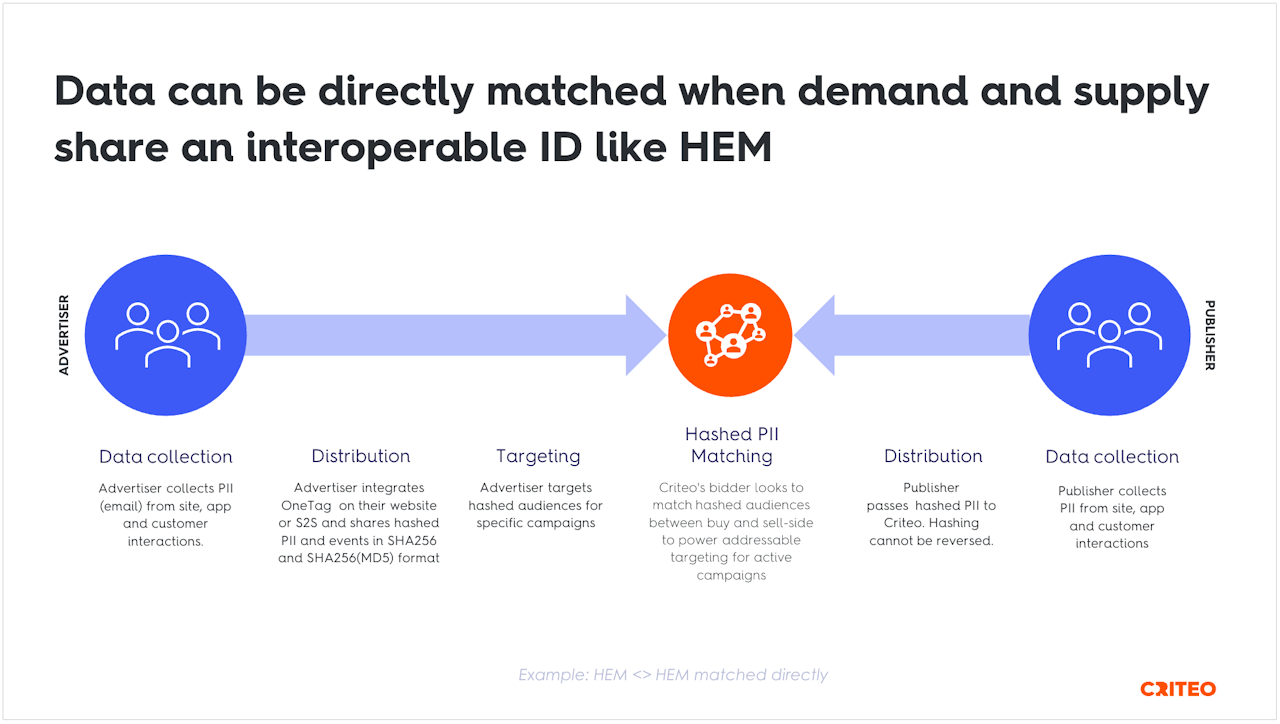


Understanding First-Party Data
First-party data describes your customer footprint. It is the information customers have consented to provide, like an email address or phone number that your business directly collects while people interact with your products and services. You own this data, which can be collected online and offline.
First-party data can:
Help you build a strong foundation for customer relationships throughout their buying journey.
Reveal trends around product-market fit and help you understand your brand better.
Improve your customers’ experiences with relevant ads, personalized messaging, and creatives.
Help you segment and engage customers based on real outcomes.

First-party can be classified into two categories
First-party data can be categorized into two types:
Partner-specific data: Data that is only understood by you. This data can be anything from your specific first-party cookies, CRM IDs, or Loyalist Account Numbers.
Interoperable data: This is data that can be understood by anyone in the industry. Third-party cookies are examples of interoperable data. With third-party cookies away, Criteo and many others in the industry are transitioning to new forms of interoperable like hashed email or other deterministic and probabilistic alternative IDs.
Addressability relies on interoperable data as it can be directly matched without any other additional signals to connect to publisher inventory.

Future-Proof First-Party Data with Hashed PII
What is hashing?
Hashing means transforming plaintext content to a pseudonymous string that cannot be reversed.
Why hashed email?
Hashed email preserves customer privacy by obscuring real-world identity via the hashing process.

How is the collected data matched?
When demand and supply share an interoperable ID like HEM, data can be directly matched.
Step 1 Data collection: As an advertiser, you collect PII (email) from the site, app, and other means of customer interactions.
Step 2 Secure Distribution: As an advertiser, you integrate OneTag on your website or S2S and share hashed PII and events in SHA256 and SHA256(MD5) format.
Step 3 Targeting: As an advertiser, you target hashed audiences for specific campaigns.
Step 4 Hashed PII Matching: Criteo's bidder looks to match hashed audiences between buy and sell-side to power addressable targeting for active campaigns.
Step 5 Secure Distribution: Publisher passes hashed PII to Criteo. Hashing cannot be reversed.
Step 6 Data Collection: Publisher collects PII from site, app, and customer interactions.
If demand and supply send partner-specific data, it can be indirectly matched via Criteo’s identity graph
Step 1 Data collection: As an advertiser, you collect PII (email) from site, app, and customer interactions.
Step 2 Secure Distribution: As an advertiser, you integrate OneTag on their website and share partner-specific data along with HEM or other data.
Step 3 Targeting: As an advertiser, you target first-party audiences for specific campaigns.
Step 4 Matching Via Identity Graph: Criteo relies on associated data to resolve identity across demand and supply unveil match. An increased number of data hops reduces match rates.
Step 5 Secure Distribution: Publisher passes publisher-specific data along with other signals like MAID, alt ID, HEM, and 3pc to Criteo via tags-on-site.
Step 6 Data Collection: The publisher collects first-party data like CRM ID, first-party cookies, and more on the web and app.
How can you increase your hashed email coverage?
The best way to increase your hashed email coverage is by incentivizing logins. Here are some tips:
Provide discounts and coupons upon login
Personalize recommendations
Introduce loyalty programs and rewards
Host in-person events for members
Send personalized newsletters and blogs
Provide early access and exclusive discounts to members
Checklist
Here’s a quick First-Party Data Checklist for you!
